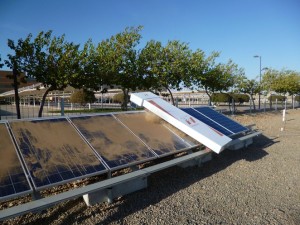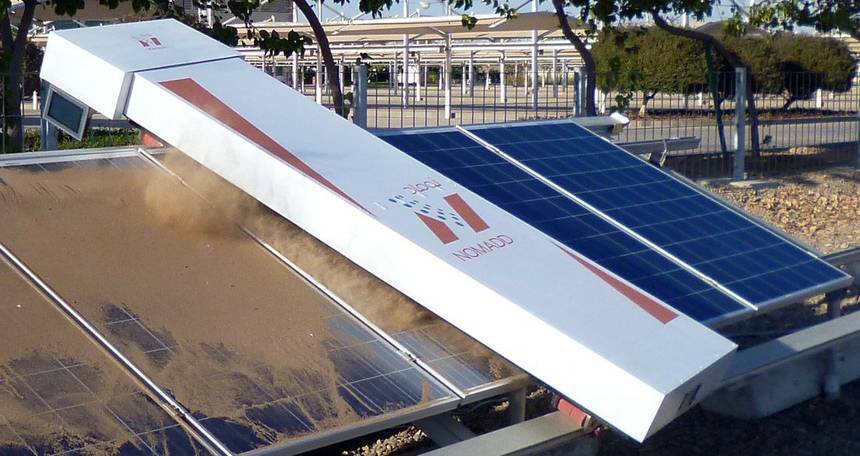Source: treehugger.com
Published: July 9, 2014

© NOMADD
Deserts are sunny, so they’re ideal for solar power. But they’re also very dusty, which is a problem for obvious reasons. The owners of solar farms need a way to clean the panels so they maintain optimal conditions, otherwise they lose about 0.4-0.8% in efficiency per day, and up to 60% after dust storms. But hosing panels down with water in the middle of an arid area is problematic on so many levels… And anything that requires a lot of human labor in the middle of a remote desert where temperatures can go over 122 degrees fahrenheit during the day is going to be tough under any circumstances.
These are the problems that the NO-water Mechanical Automated Dusting Device (NOMADD) robot from Saudi Arabia is trying to solve.

© NOMADD
Little robots are mounted on tracks along rows of panels, and at least once a day they do a pass over the panels, cleaning them with a brush designed not to damage the panels, and without any water required. This makes a big difference over manual cleaning which only happens every week or two most of the time. Panels spend a lot less time with dust on them, so they produce more electricity. A single NOMADD can clean a row of panels about 600 feet long, with plans to upgrade that to 900 feet.
Because each row of panels has its own NOMADD robot, they can work in parallel and it doesn’t take longer to clean a gigantic solar farm than a tiny one, which is definitely not the case with traditional cleaning methods.
One of the benefits of NOMADD is that it was developed in a part of the world that really knows its stuff about desert conditions. The makers of the robot claim that it pays for itself in three years and can survive in harsh conditions with minimal maintenance.
“The NOMADD is not a cleaning solution developed in mild conditions, naively transported to the MENA region. It is a system designed, developed and tested in Saudi Arabia for the harshest desert conditions. These conditions cannot be properly prepared for without direct exposure throughout the development process. This is where our advantage lies.”
